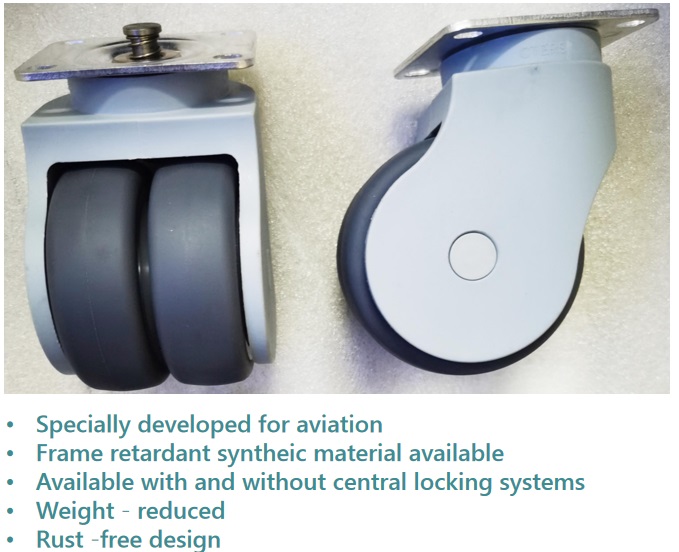The Impact of Material Selection on Airline Trolley Caster Performance
Airline trolley casters are essential components of in-flight service operations, tasked with transporting meals, drinks, and other goods through the aircraft cabin. The performance of trolley casters is highly dependent on the materials used in their construction. The selection of materials can affect critical aspects such as durability, weight-bearing capacity, and resistance to wear and tear.
Traditionally, airline trolley casters were made from metal alloys such as steel or aluminum. These materials offered excellent strength and durability but were relatively heavy and prone to corrosion over time. In recent years, there has been a shift towards using lightweight and corrosion-resistant materials like plastic and composite materials.
One of the most significant advantages of using plastic and composite materials is their low weight. Reduced weight translates to decreased fuel consumption and increased payload capacity, resulting in more efficient airline operations. Additionally, plastics and composites offer high resistance to corrosion, making them ideal for use in harsh aviation environments.
Another advantage of plastic and composite materials is their ability to absorb shock and vibration, increasing the lifespan of the casters. Unlike metals, plastics and composites are inherently elastic materials, allowing them to deform slightly during impact and absorb shock energy. This property reduces the risk of caster deformation or damage when navigating rough surfaces or encountering obstacles.
Furthermore, plastic and composite materials offer greater design flexibility, enabling customizations that improve the performance of the caster. For instance, manufacturers can incorporate features such as non-slip surfaces, noise-reducing pads, and anti-static properties to enhance the overall functionality of the caster.
However, the transition from metal to plastic and composite materials comes with its challenges. One of the primary concerns is the potential loss of load-bearing capacity. While metals remain superior in terms of weight-bearing capacity, modern plastic and composite materials have bridged this gap considerably, offering comparable performance in most applications.
Additionally, plastic and composite materials can be more susceptible to wear and tear, which can lead to a reduction in caster lifespan. Therefore, manufacturers must select durable materials that can withstand frequent use and harsh environmental conditions.
In conclusion, the selection of materials has a significant impact on the performance of airline trolley casters. Plastic and composite materials offer advantages such as lower weight, corrosion resistance, shock absorption, and design flexibility. While these materials may face challenges like reduced load-bearing capacity and susceptibility to wear and tear, the ongoing advancements in material science ensure that the gap between traditional and modern materials continues to close. As airlines strive for efficiency, sustainability, and safety, the selection of appropriate materials remains crucial in achieving these objectives.


 English
English Spanish
Spanish German
German Russian
Russian Arabic
Arabic Portuguese
Portuguese Italian
Italian French
French Hebrew
Hebrew Turkish
Turkish